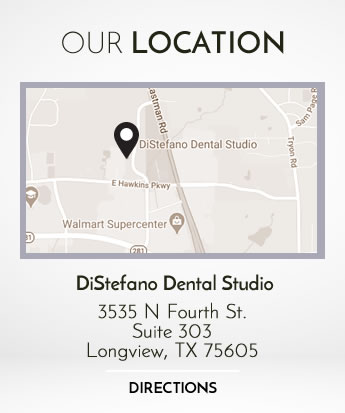
You might wonder what the difference is between general dentistry and family dentistry. They are quite similar but have a few key distinctions. Finding the right dental health professional for you and your family is very important, and maintaining checkups and treatment is part of the process.
One major element of family dentistry is that these professionals accepts patients of all ages, from babies to senior adults. Every member of your family can visit the same office and receive consistent quality care that you expect from your chosen dentist. Each age group has unique needs that can be addressed by a family dentist who is trained and experienced in handling those concerns.
Family dentists provide treatment to both repair existing problems. Diagnosing oral health issues and then performing procedures such as fillings are common parts of the job. Your family dentist may recommend that some services be treated by a specialist, like oral surgeons for dental implants, endodontists for root canal therapy, or orthodontists for braces. However some family dentists perform those types of procedures, so it depends your service provider.
Family dentists also perform treatments to help avoid future oral health problems. Things like cleanings, fluoride treatments, and sealant application are all routine tasks. It is vital to schedule dental checkups every six months to catch and treat problems before they have a chance to advance. Some offices provide teeth whitening, and all family dentists are well-versed in training your family members in the best techniques for home dental hygiene.
To increase the likelihood of you and your loved ones keeping appointments, choose a family dentist with a convenient office location. Also, find a practice that is comfortable and appealing to family members. Younger children may benefit from distraction items such as television or video games. If dental anxiety is an issue for anyone, a practice that offers sedation dentistry may be a good choice.
Ask coworkers, friends, and neighbors for recommendations for a good family dentist in your area. Visit the practice to ensure it is right for you, and then make and keep appointments for everyone in your family.
We look forward to seeing you in our Longview dental office

When you’re talking about the oral health of yourself and your family, there is no excuse for neglecting regular dental care. There are various kinds of dentists and specialists, but if you need general dental treatment, a family dentist is a great choice.
Family dentists treat common dental problems and provide maintenance care. Visiting a family dentist is the first line of defense against oral health problems. In addition to regular checkups and cleanings, you will learn preventative techniques to help you avoid issues. If the dentist diagnoses a problem and you need further treatment, a specialist in that area may be recommended to provide additional specialized care.
It is important to find the right family dentist for your needs. Look for advertisements for dentists in your area, and ask friends and family for recommendations. Visit the dental office before finalizing your selection so that you can meet the staff, see the facility and equipment, and learn more about the practice. You should feel comfortable and confident in the office policies and staff, since you are likely establishing a healthcare relationship to last for years.
Also ask about the dentist’s qualifications and experience. Make sure that the services you are interested in are offered, and that the dentist works with specialists to get you the proper treatment for those that are not offered. It is ideal to visit the dentist for minor treatment such as a professional cleaning before switching the whole family to the practice. That way you can see first-hand if the dentist meets your expectations. You may also want to schedule an appointment for your children to ensure the whole family is comfortable.
Once you and your family are confident that the family dentist is right for all of you, switch everyone to the practice and then follow up on regular dental care for the whole family.
If you live in the Longview area contact us today

The area of dentistry that provides preventative and restorative treatment for oral health needs for the whole family is called family dentistry. These types of dental practices deal with all age groups using a wide variety of treatment options.
Although similar to general dentistry, family dentistry does not restrict the practice to specific age groups. It addresses oral health issues at every stage of life, from baby teeth to permanent teeth. Children should begin regularly seeing a dentist around turning one year old, so what better way to start your child’s professional dental care by establishing care with the same dentist that the whole family sees? It is convenient to have everyone seeing the same dentist, and you can establish a long-lasting healthcare relationship for all of you.
One of the most important aspects of family dentistry is ongoing, consistent maintenance and preventative treatment. Experts recommend getting a dental checkup every six months for deep cleanings and routine examinations. This helps eliminate plaque buildup, a primary cause of tooth decay and cavities, and identifies any oral health issues that might be occurring even before symptoms develop.
Fluoride treatments are offered by most family dentists. This involves coating the teeth with fluoride to help prevent tooth decay. Dental sealants are another line of defense against dental issues that family dentists can provide. Other services that some family dentists offer include cavity filling, gum disease treatment, crowns, root canals, extractions, and orthodontics. Treatments offered completely depends on the family dentist and the associated practice. Make sure you ask questions and learn all about the practice before choosing a family dentist for your own family’s needs.
We look forward to seeing you in our Longview dental office

The importance of having a family dentist who can take care of every family member’s oral health needs can’t be emphasized enough. You can prevent cavities, gum disease, and even tooth loss by visiting your family dentist regularly. Not only that, your overall health and your appearance will also benefit.
Better oral health:
Regular examinations by your family dentist will check for problems like tooth decay and cavities. Gum disease is another oral health issue that your dentist will look for, so that it can be detected and treated early. Dental problems are much easier to handle when they are caught early, before they can advance to more serious stages which may even mean tooth loss. Your teeth will also have a thorough professional cleaning at dental visits, getting rid of unhealthy plaque and tartar. Children can begin visiting the family dentist around the first birthday, and checkups should continue throughout life.
Improved appearance:
In additional to advantages for your oral health, your smile will look more appealing when you maintain regular family dental visits. Your teeth will be in the best condition possible when you have examinations and cleanings as recommended. If you are interested in further treatment that your family dentist doesn’t specialize in, you may be referred to a cosmetic dentist or orthodontist.
Enhanced overall health:
You may not realize it, but seeing a family dentist does more than protect your teeth. Your overall health will be improved when you care for your oral health. Gum disease has been linked to health problems like heart disease, diabetes, strokes, and pregnancy complications. So your risk for these serious health problems may be decreased with regular visits to your family dentist. Another health problem that dental checkups can catch is oral cancer. Most dentists perform routine oral cancer screenings during examinations, so that your chances for recovery are much greater with early detection and treatment.
Our dental office is located in Longview

Facing dental issues are a fact of life, no matter your age. The likelihood is almost certain that at least one member of your family will require dental treatment at some point, not to mention the need for regular checkups and cleanings. The promise of dental care being required by every family member means that it can be beneficial to have a family dentist who can take care of each one’s oral health.
Although you might choose to seek oral care from a general dentist, there are some unique advantages that family dentists offer. First and foremost, a family dentist treats every member of your family no matter their age. This type of dental practice is comfortable handling any age group, while a general practice might not be as prepared for the young and old and everyone in between.
Another benefit is that you can find a single family dental practice and not have to keep looking for a dentist for each family member. You can convey your family information one time to one office, and the staff will get to know all of you. The dentist and staff will learn about the oral health of every family member, and you can feel confident that each person is receiving the same quality care.
Once you choose a family dentist, everyone will know what office to go to and may even be able to make joint appointments. It will be easy to communicate with a single location, and you’ll grow comfortable in dealing with the same group of people for every family member. Many people appreciate having a long-term professional healthcare relationship, and feeling confident in the care and experience each member of your family will have there.
We treat patients from Longview and the surrounding area

One of the most important decision for the health of you and your family is a family dentist. Similar to a general dentist, family dentists offer a few significant exceptions. Both types of dentists treat oral health and manage dental hygiene, but family dentists offer care to patients of all ages. This makes family dentistry a convenient choice especially if you have family members of various ages in your home.
Traditional dental services that you’d expect from any dentist are available at a family dental office. Preventative services like professional cleanings, fluoride treatments, and thorough examinations are offered. Regular checkups allow for diagnostic tests to catch problems in their early stages, before they have a chance to advance and become very painful or complicated to repair. Procedures like dental fillings, bonding, root canal therapy, teeth whitening and more are often available through your family dentist. If specialized care is required that is not performed in the office, the dentist will provide a referral to an appropriate specialist for treatment.
Finding the right family dental practice for your whole family is vital. This will increase the comfort level of your family members and promote checkups every six months as advised by dentists. To choose your family dentist, ask friends, family, coworkers and neighbors for recommendations. Schedule a consultation to meet the dentist and staff, see the office, and make sure the practice meets your requirements. It is especially important to ensure children are comfortable with the family dentist to help avoid fears or anxiety. Also look for an office convenient to your home so that everyone will be more likely to keep their appointments.
From baby teeth in kids to permanent teeth in adults to missing teeth in seniors, family dentists are trained and equipped to handle everyone’s needs.
If you live in the Longview area contact us today









